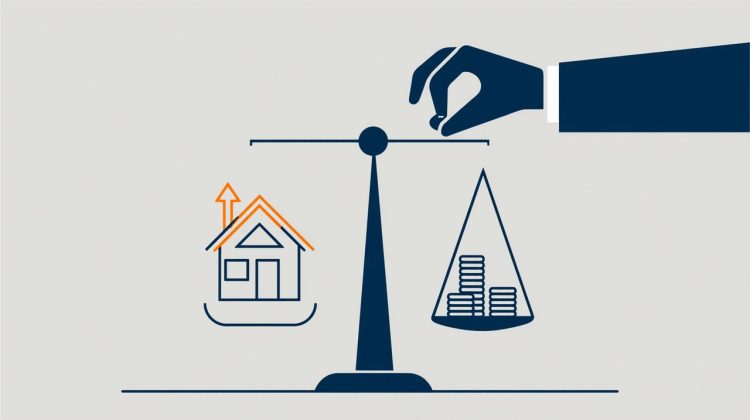Unlock Your Homeownership Dream: A First-Time Homebuyer’s Guide to Mortgage Calculators
The journey to owning your first home is often less about finding the perfect bricks and mortar, and more about navigating a sea of numbers while holding onto a quiet, persistent dream. It’s a path filled with immense hope, but also the daunting weight of financial uncertainty. Many first-time homebuyers find themselves at this crucial crossroads, yearning for clarity amidst complex figures. This is precisely where a seemingly simple tool, the mortgage calculator, steps forward. It’s not just an arithmetic aid; it’s a crucial companion in unlocking your homeownership story, transforming numbers into tangible dreams.  Think of it as a silent witness, helping you sketch out the financial blueprint for that longed-for space. In this article, we’ll explore five distinct methods for effective budgeting and planning, illustrating how Mortgage Calculators for First-Time Homebuyers become an indispensable asset.
Think of it as a silent witness, helping you sketch out the financial blueprint for that longed-for space. In this article, we’ll explore five distinct methods for effective budgeting and planning, illustrating how Mortgage Calculators for First-Time Homebuyers become an indispensable asset.
Method 1: Understanding the Mortgage Calculator’s Core Value
At first glance, a mortgage calculator might look like nothing more than a collection of input fields and algorithms. Yet, for those embarking on their homeownership journey, it quickly transforms into a fascinating, story-bearing object. It becomes a canvas where future lives are tentatively drawn, a quiet stage for aspirations to take shape. Its profound value lies in its ability to translate abstract financial data into concrete future visions. Every number you input and adjust is like sketching the outline of a home – from a child’s bedroom to a weekend patio. It holds countless “what ifs” and “possibilities.” Consider a young couple, eyes fixed on the screen, inputting their income and desired loan term. They aren’t just calculating interest; they’re envisioning morning coffees in their own kitchen or a child’s first steps on a new floor. In this light, the calculator isn’t cold; it’s warm with the promise of a future. It stands as a testament to their shared hopes, a tangible representation of their combined effort and belief in a future home.
“A home is not a place, it’s a feeling. And a mortgage calculator, in its quiet way, helps us build the financial foundation for that feeling.”
Method 2: Charting Your Comfort Zone with a Realistic Home Budget
The initial step for any aspiring homeowner involves truly understanding their financial boundaries. A mortgage calculator serves as a vital instrument in this crucial phase, helping you define what is genuinely affordable and sustainable for the long term. The core method here is straightforward: input your income, existing debts, and potential down payment. The calculator will quickly provide an estimated range for your monthly mortgage payment. This isn’t just a number; it’s a preliminary picture of your future monthly financial commitments.  Here are the key steps to get started:
Here are the key steps to get started:
- Step One: Accurately enter your gross monthly income and all fixed monthly expenses, including car loans, student loans, and credit card debts.
- Step Two: Estimate the amount you can provide for a down payment. This directly impacts your total loan amount and, consequently, your monthly payments.
- Step Three: Use the calculator to adjust the loan term and expected interest rates. Observe how your monthly payment changes to find a range where you feel truly financially comfortable. This directly addresses how to use a mortgage calculator for effective first-home budgeting.
A common misconception is to focus solely on the lowest possible monthly payment. Many first-time homebuyers gravitate towards this, overlooking that it might mean a much longer repayment period and significantly higher total interest paid. The goal is to find a balance: something you can comfortably afford, while also working towards financial freedom as efficiently as possible.
Method 3: Simulating Loan Scenarios for Informed Decisions
Beyond simply setting an initial budget, Mortgage Calculators for First-Time Homebuyers offer a powerful simulation engine. This allows you to project the impact of different loan structures on your financial future, providing invaluable foresight for making truly informed decisions. The key function here is comparing the long-term effects of various loan products. You can input different interest rates, loan terms (like 15 years versus 30 years), and loan types (fixed-rate, adjustable-rate). You’ll instantly see the significant differences they make to your monthly payment and overall interest expenditure.
The underlying principle reveals the powerful leverage of time and money. A seemingly small difference in interest rate, over decades of repayment, can accumulate into tens of thousands of dollars in interest. Similarly, choosing a shorter loan term, while resulting in higher monthly payments, can drastically reduce your total interest paid and accelerate your path to full ownership. For example: Imagine a $300,000 loan at a 5% interest rate. A 30-year term might result in a monthly payment of approximately $1,610, with total interest paid around $279,600. In contrast, a 15-year term at the same rate could mean a monthly payment of about $2,372, but with total interest paid closer to $127,000. That’s a savings of over $150,000 in interest – a significant sum that could go towards retirement, education, or other financial goals. This kind of in-depth comparison helps homebuyers weigh short-term pressure against long-term gains.  Our actionable advice: Dedicate time to simulate at least three different loan scenarios using the calculator. Print out these results and discuss them with a trusted financial advisor to determine the option that best aligns with your long-term financial goals Home Loan Cost Calculator.
Our actionable advice: Dedicate time to simulate at least three different loan scenarios using the calculator. Print out these results and discuss them with a trusted financial advisor to determine the option that best aligns with your long-term financial goals Home Loan Cost Calculator.
Method 4: Unveiling All Homeownership Costs for a Comprehensive Budget
For many first-time buyers, the sheer excitement of a potential new home can easily overshadow the less obvious, yet critically important, costs associated with ownership. A mortgage calculator, when used thoughtfully, becomes an essential tool for uncovering these hidden layers. The core method involves using the mortgage calculator as your starting point, then systematically adding in other homebuying and homeownership costs. This helps you build a truly comprehensive budget that extends far beyond just your monthly mortgage payment.
Consider a real-life example: Amy and Jack, a young couple, initially focused only on principal and interest when using their calculator. However, with a friend’s reminder, they began to input property taxes, homeowner’s insurance, potential Homeowners Association (HOA) fees, and even an estimated maintenance fund into their budget model. The calculator helped them see the real impact of these additional expenses on their monthly outlay, preventing potential financial strain down the road.
Here’s some actionable advice to ensure your budget is complete:
- Estimate Property Taxes: Research the tax rates in your target area and estimate based on the home’s value.
- Factor in Insurance: Get quotes for homeowner’s insurance from various providers.
- Allocate for Repairs: A good rule of thumb is to set aside 1-3% of the home’s value annually for maintenance and unexpected repairs.
- Account for Closing Costs: Remember one-time fees like closing costs, loan origination fees, and appraisal fees. While not part of your monthly payment, they require upfront preparation.
Through this comprehensive approach, the calculator doesn’t just calculate your loan; it becomes a guide, prompting you to think about your full spectrum of financial responsibilities as a homeowner.
Method 5: Accelerating Your Repayment and Building Equity
Beyond simply calculating what you owe, Mortgage Calculators for First-Time Homebuyers offer profound benefits by enabling you to strategize for a faster path to financial freedom. It transforms a passive debt into an active opportunity for growth and wealth building. The core method here is to utilize the calculator’s extra payment features. Explore how making additional payments impacts your interest savings and your overall repayment timeline. It’s not just a repayment tool; it’s a strategic planner for your savings.
The principle behind this is the immense power of compounding. Even making a small extra payment each month, over the long term of a loan, can significantly reduce your total interest paid and drastically shorten your repayment years. For instance, on a $300,000, 30-year mortgage at 5% interest, paying just an extra $100 each month could save you approximately $20,000 in interest and shorten your loan term by over three years. The calculator will clearly illustrate the huge long-term gains from these seemingly small, consistent efforts, motivating you to actively manage your finances.  Here are some actionable steps to accelerate your aspirations:
Here are some actionable steps to accelerate your aspirations:
- Simulate Extra Payments: Input an amount you could pay additionally each month (e.g., an extra $50 or $100). Observe how much total interest is reduced and how many years you shave off your loan.
- Consider Annual Lump-Sum Payments: If you receive an annual bonus or tax refund, input it as a one-time extra payment into the calculator to see how it speeds up your repayment process.
- Evaluate Refinancing: When market interest rates drop, use the calculator to assess the potential advantages of refinancing, including a lower monthly payment or a shorter loan term.
These simulations empower homebuyers to see that taking control of their financial future isn’t a distant dream. Instead, it’s a tangible goal achieved step-by-step through conscious planning and smart use of the right tools.
***
In the journey of homeownership, a mortgage calculator is far from a cold, numerical tool. It is your faithful partner in unlocking your homeownership story, from numbers to dreams. With its quiet wisdom, it transforms the complex financial challenges faced by first-time buyers into clear, actionable plans. Through the five methods we’ve discussed, it not only helps you understand the numbers, but more importantly, it helps you build and shape your hopes and efforts for the future. It witnesses your journey from initial questions to final decisions, from vague dreams to concrete actions. We truly encourage every first-time homebuyer to try an online mortgage calculator today. Start building your unique homeownership story and let the whispers of your dreams become the prelude to your reality.
💡 Frequently Asked Questions
A mortgage calculator serves as a crucial companion for first-time homebuyers, helping them navigate complex financial numbers to plan for homeownership. It's an indispensable tool for effective budgeting, planning, and understanding future financial commitments.
To establish a realistic budget, you input your gross monthly income, existing debts, and estimated down payment into the calculator. It then provides an estimated range for your monthly mortgage payment, allowing you to adjust loan terms and interest rates to find a comfortable and sustainable financial commitment.
Beyond the monthly mortgage payment, you should budget for property taxes, homeowner's insurance, potential Homeowners Association (HOA) fees, an annual maintenance fund (typically 1-3% of the home's value), and one-time closing costs such as loan origination and appraisal fees.
You can use the calculator's extra payment features to simulate how making additional monthly payments or annual lump-sum payments impacts your interest savings and shortens your repayment timeline. This illustrates how consistent small efforts can significantly reduce total interest paid and accelerate your path to full ownership.
Comparing various loan scenarios (such as different interest rates, loan terms like 15 vs. 30 years, or loan types) is crucial because it allows you to project the long-term impact on your monthly payments and overall interest expenditure. This foresight helps you make informed decisions, as even small differences can lead to significant savings or costs over the life of the loan.








